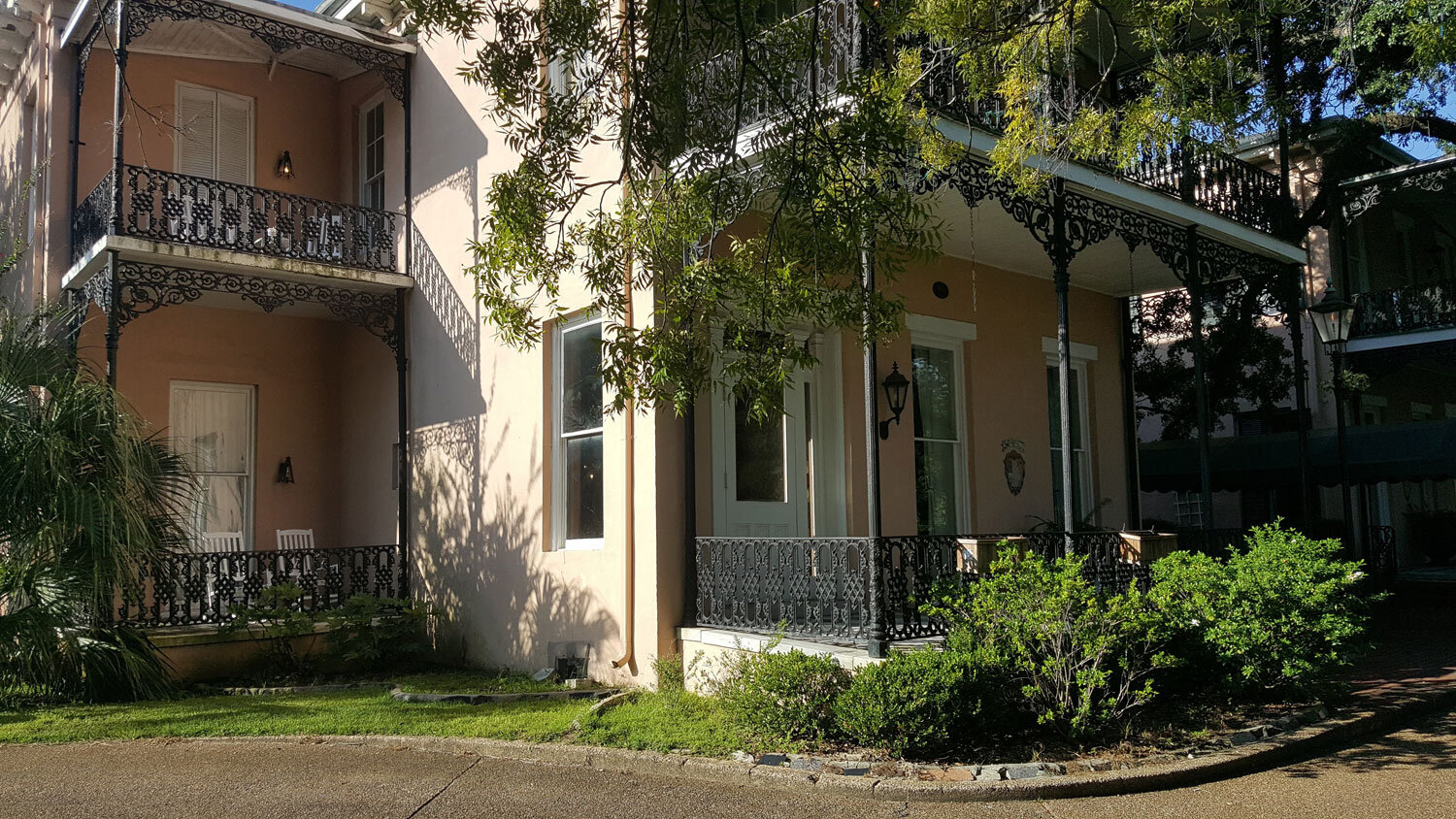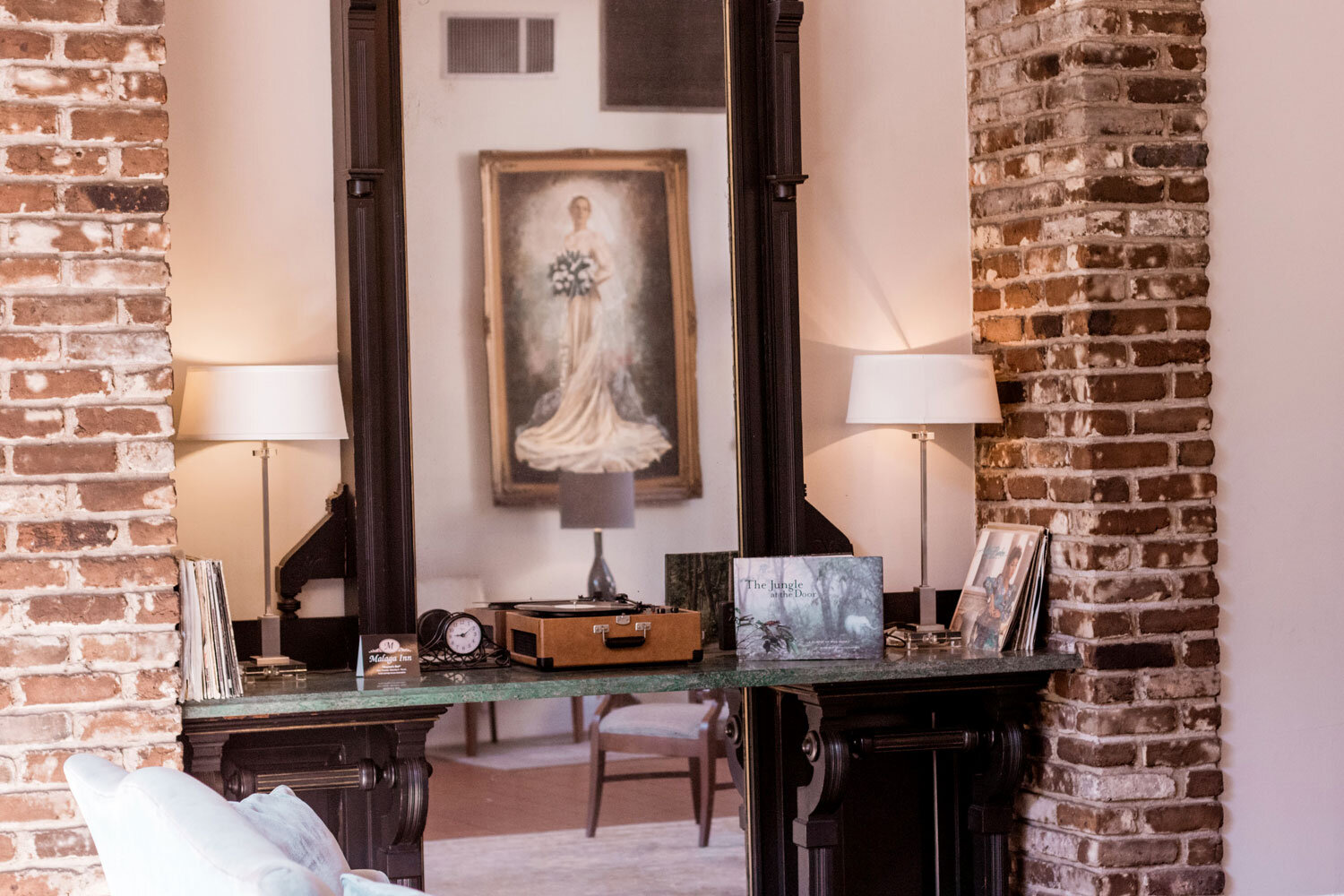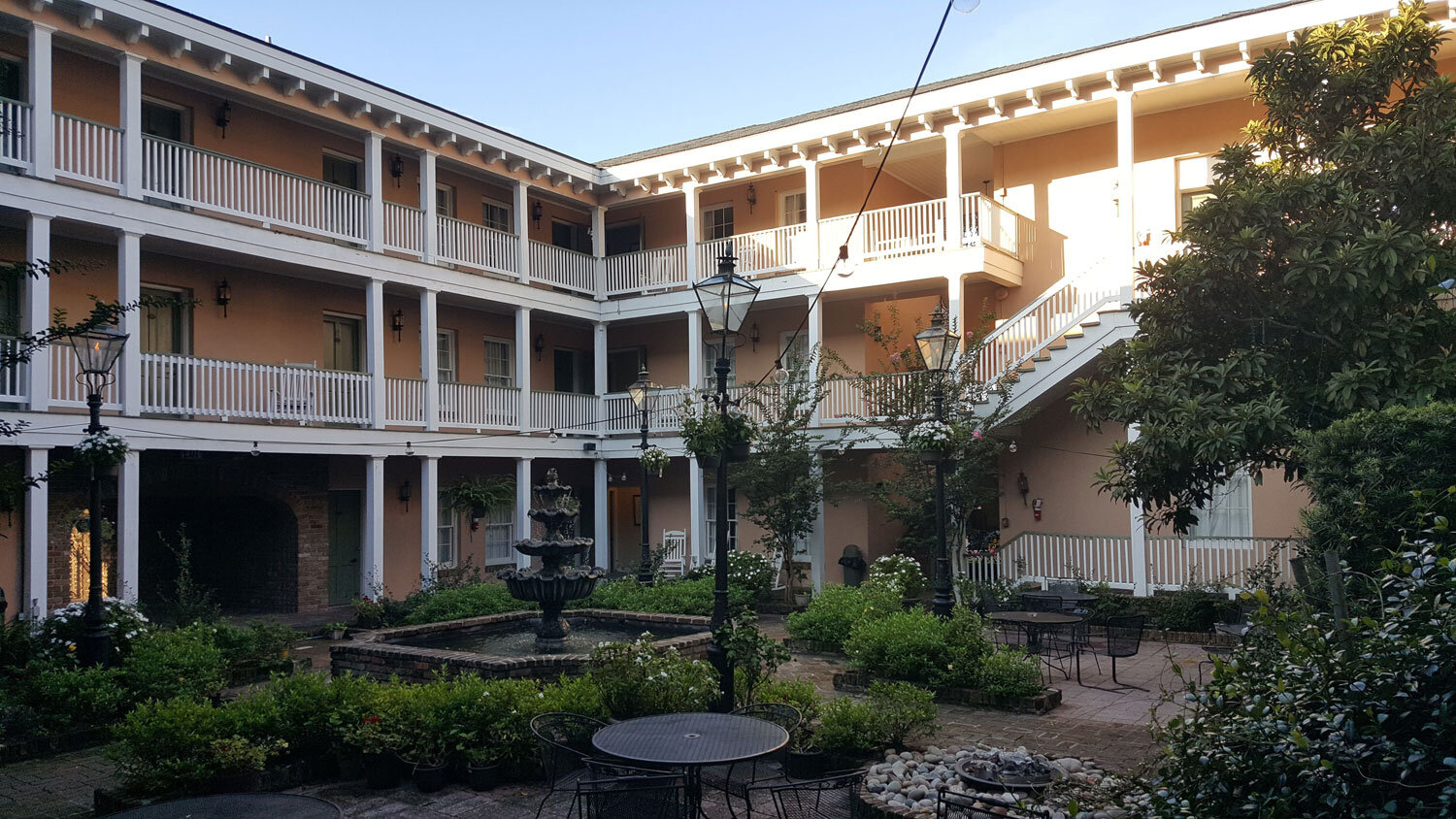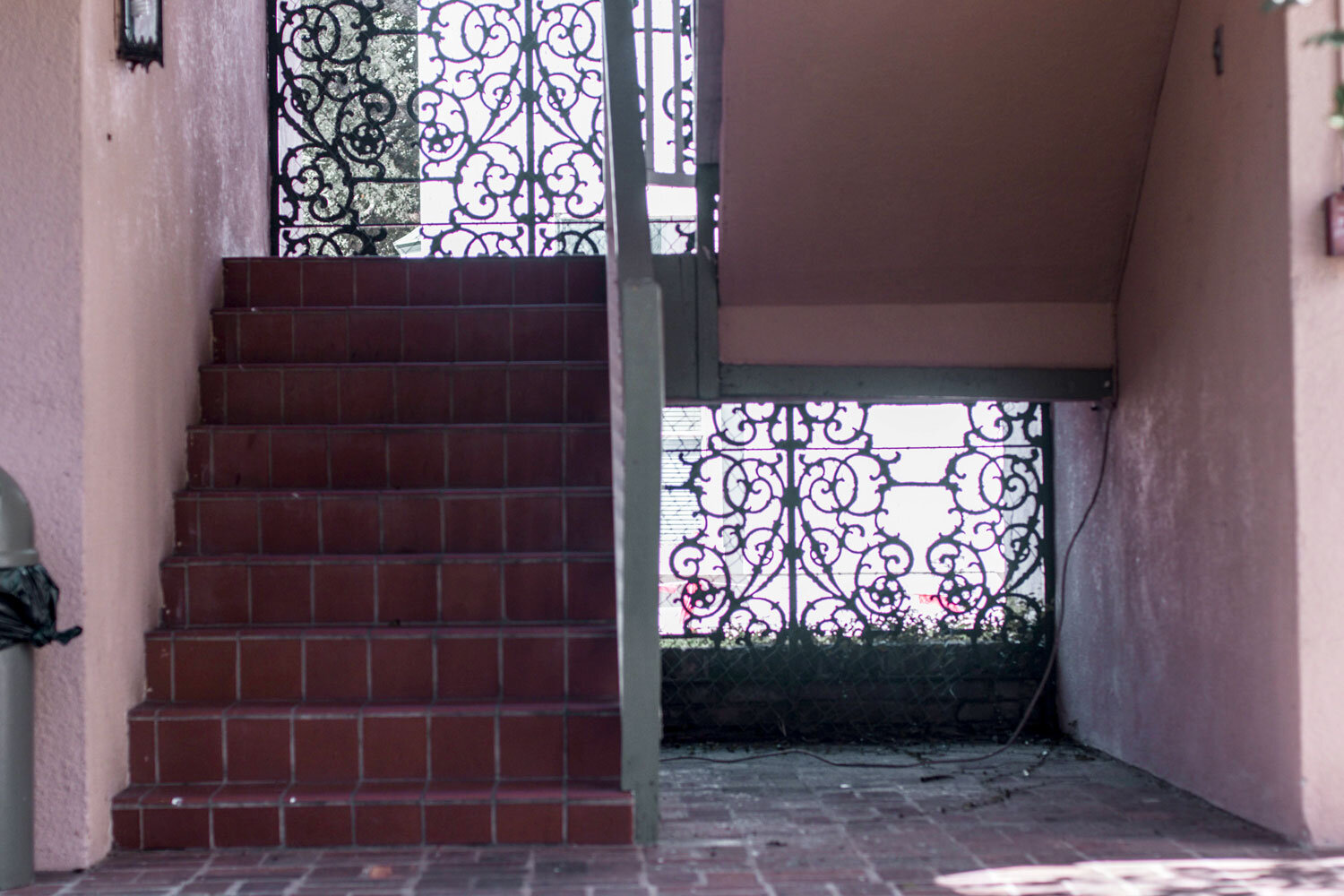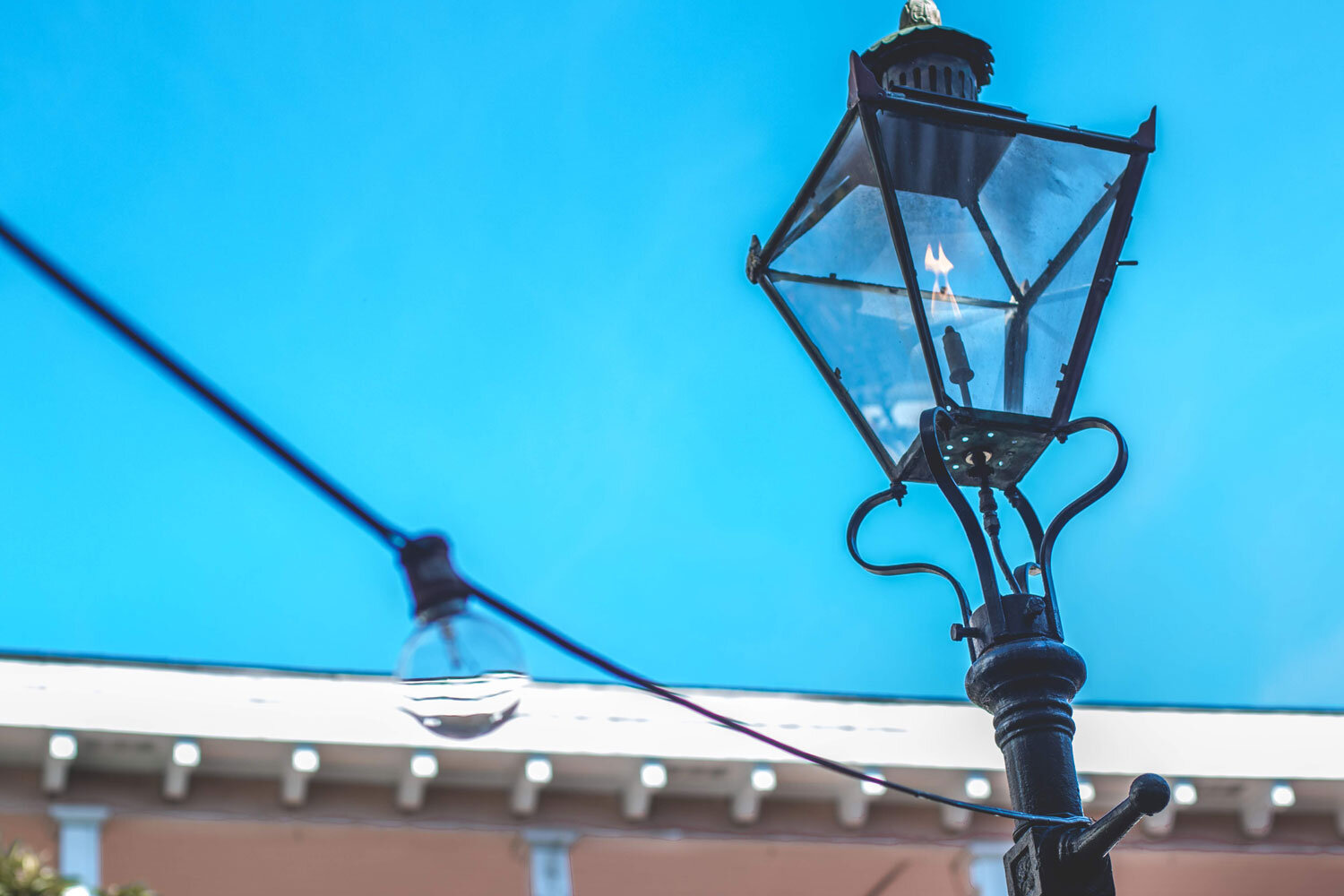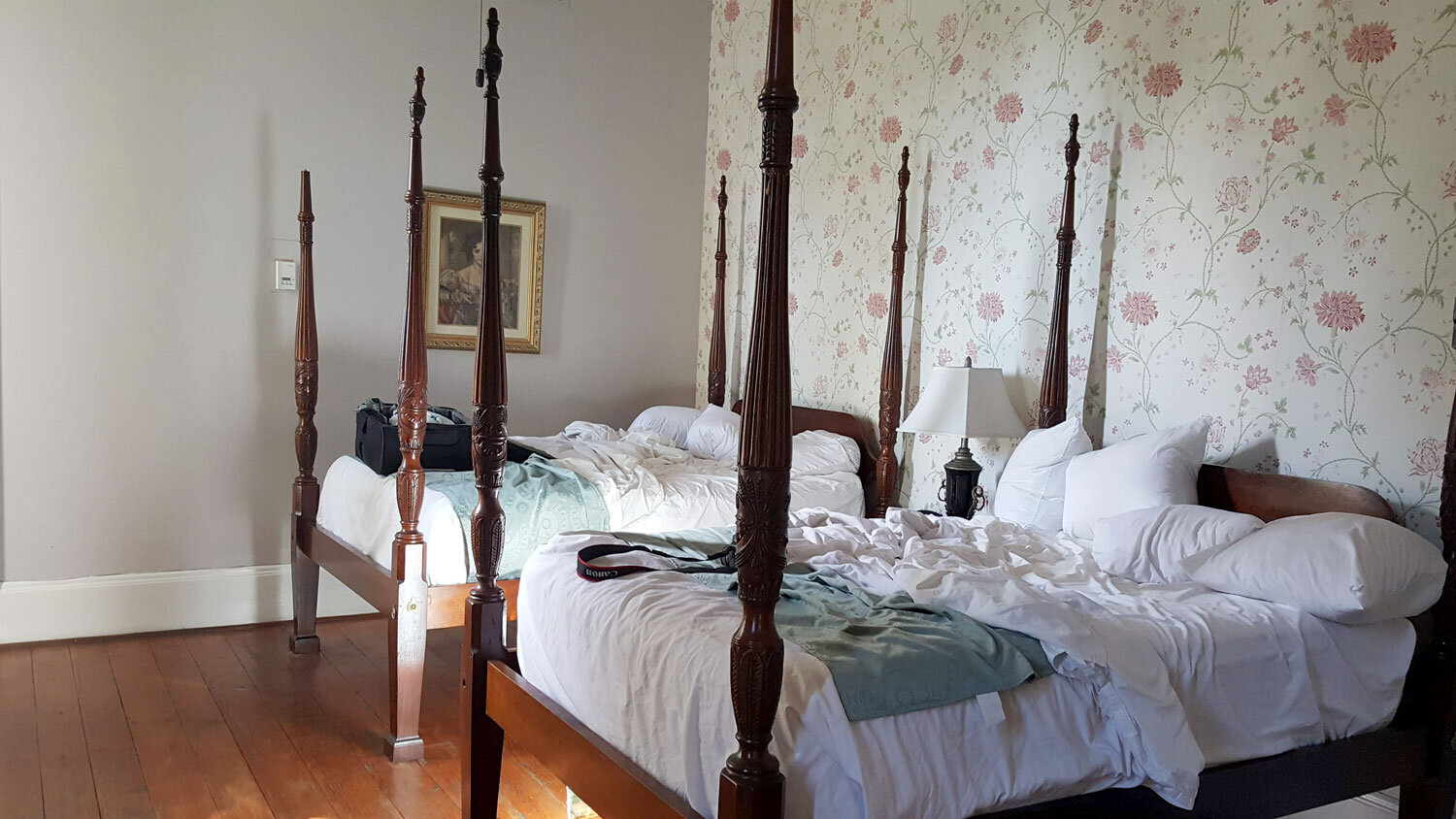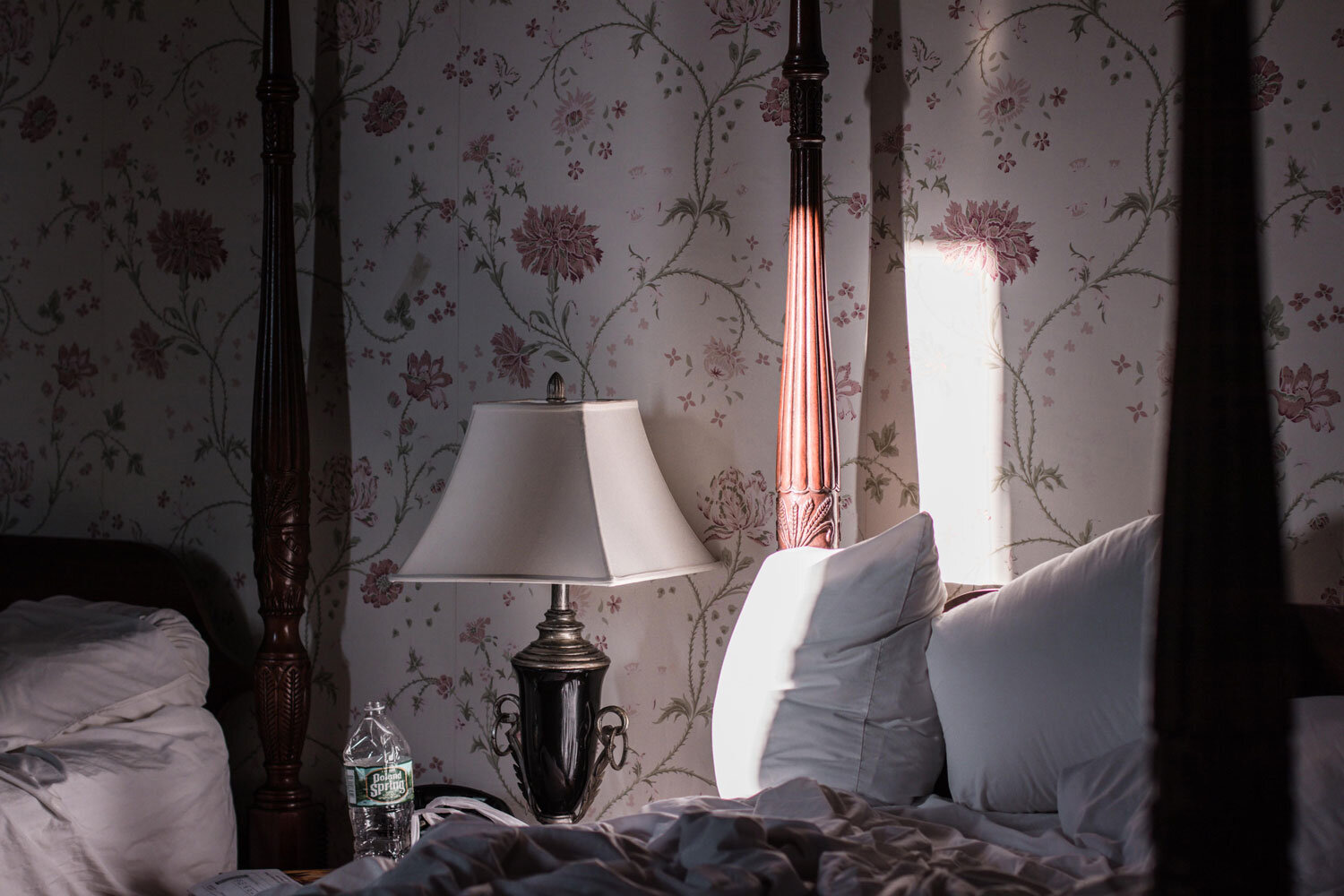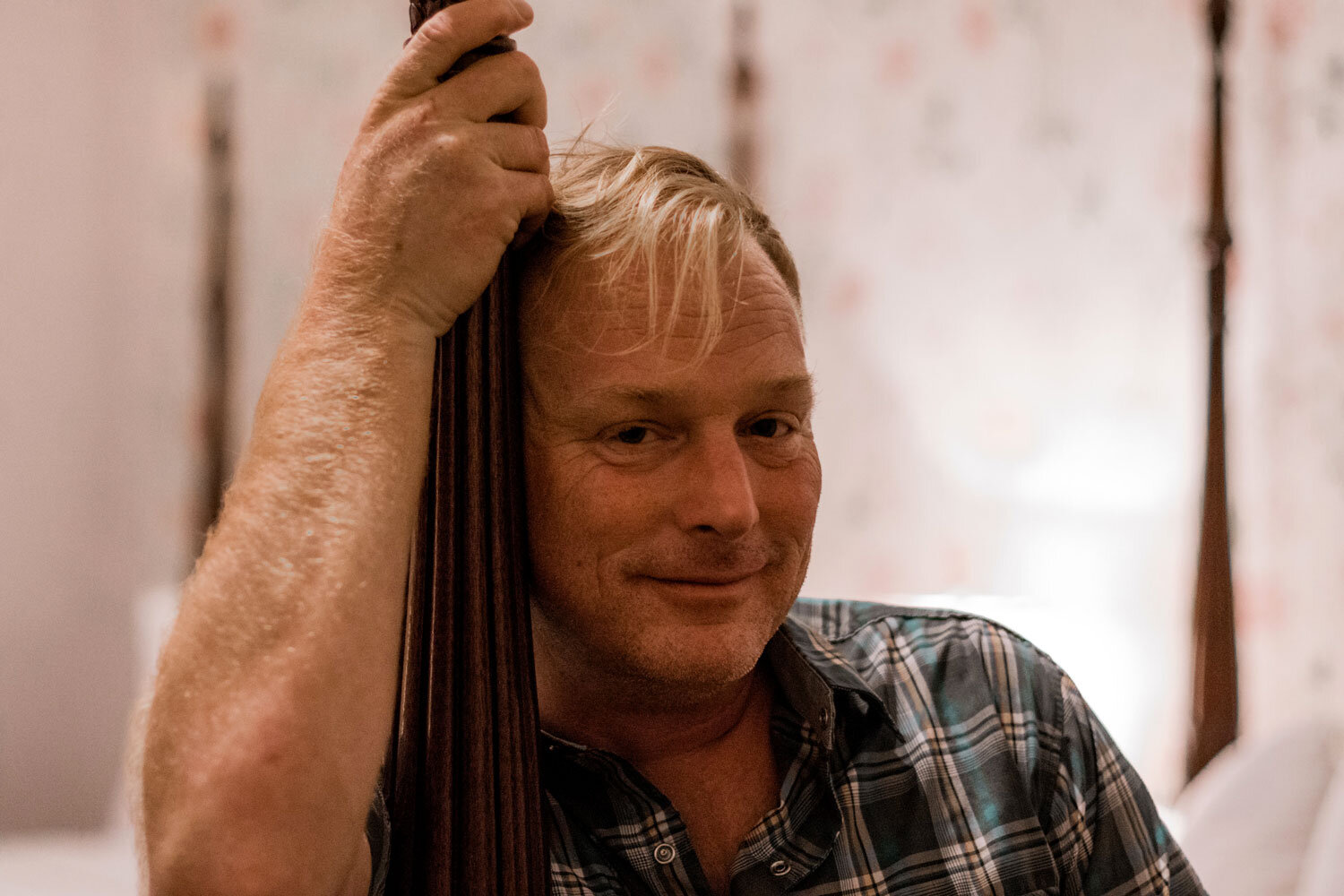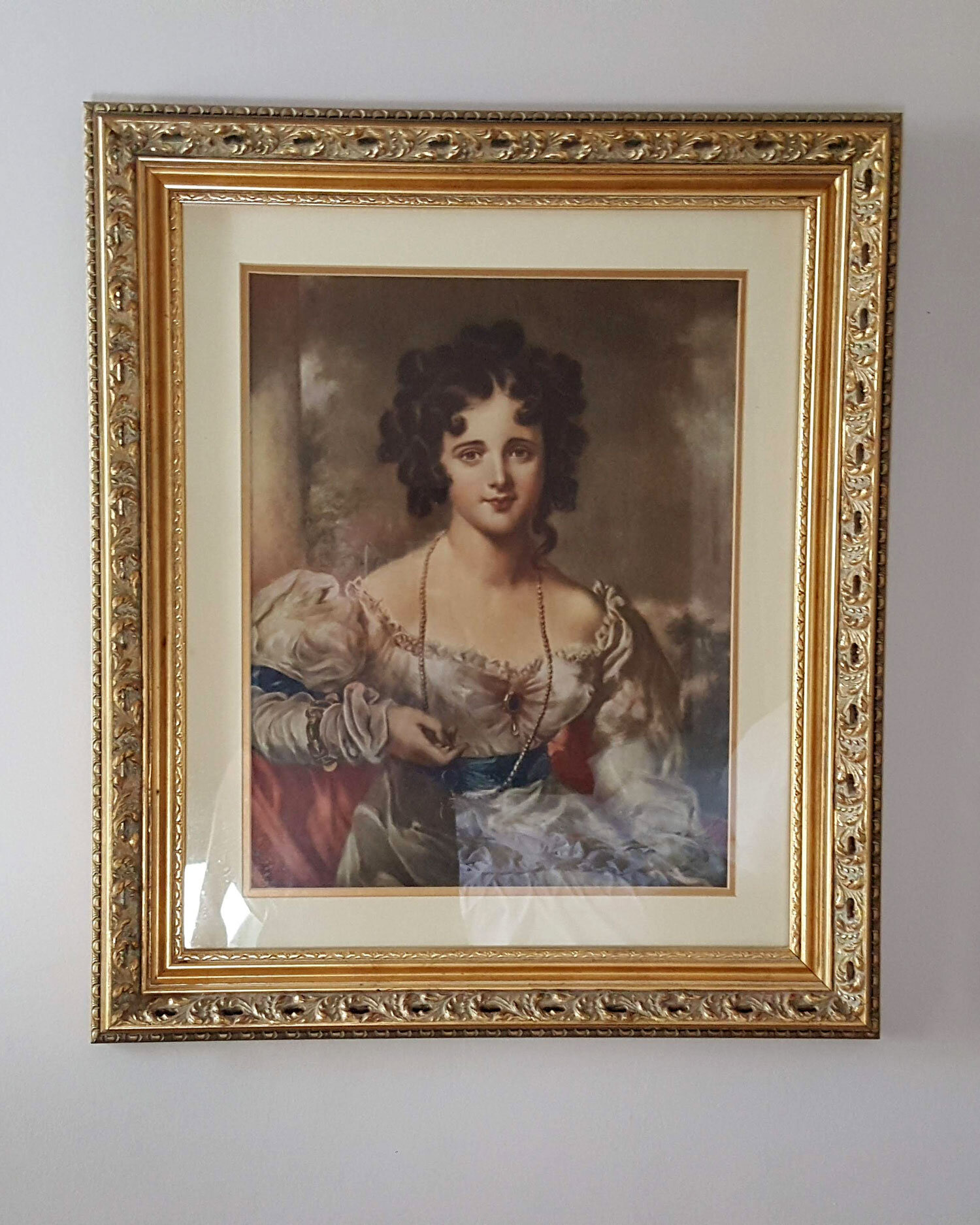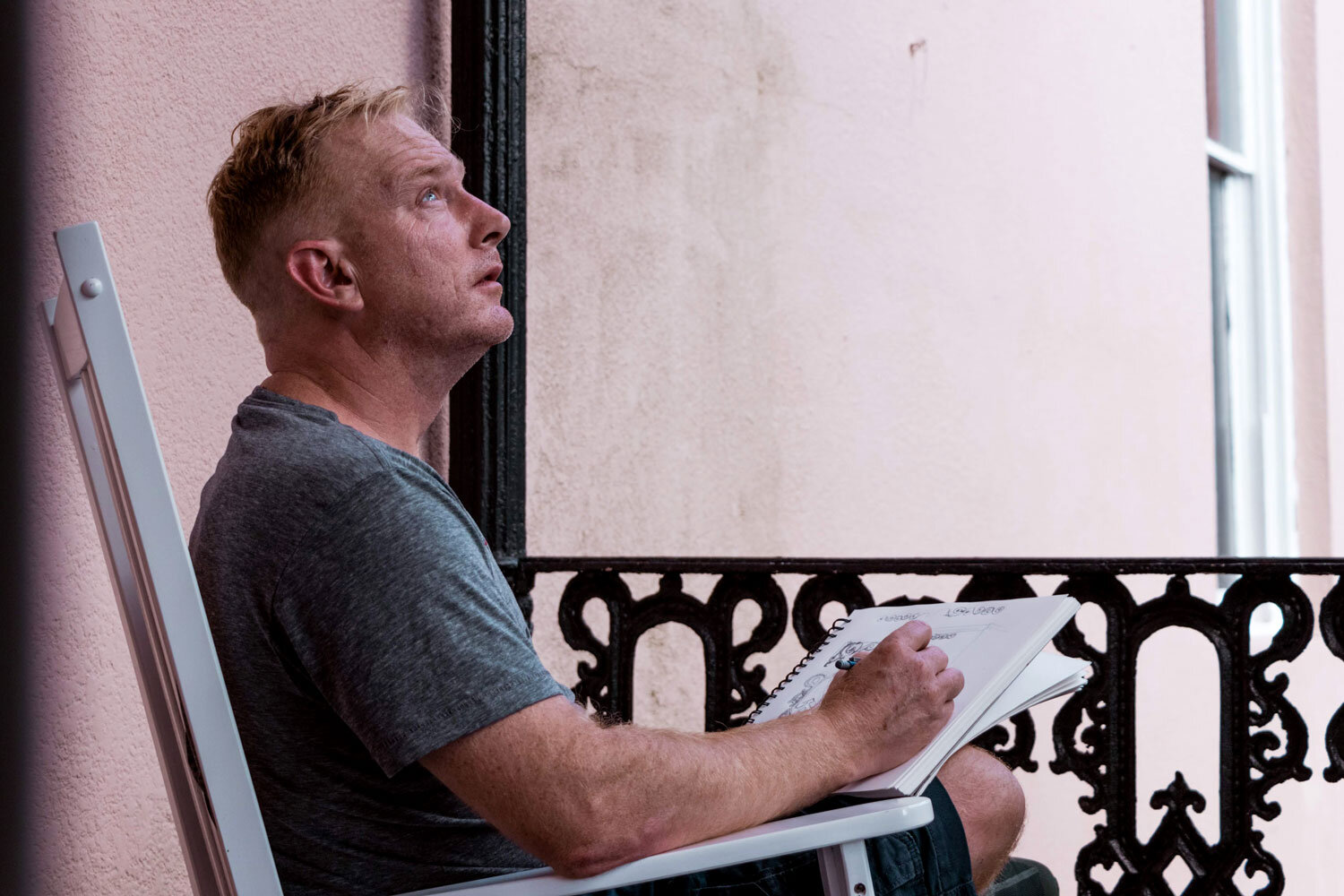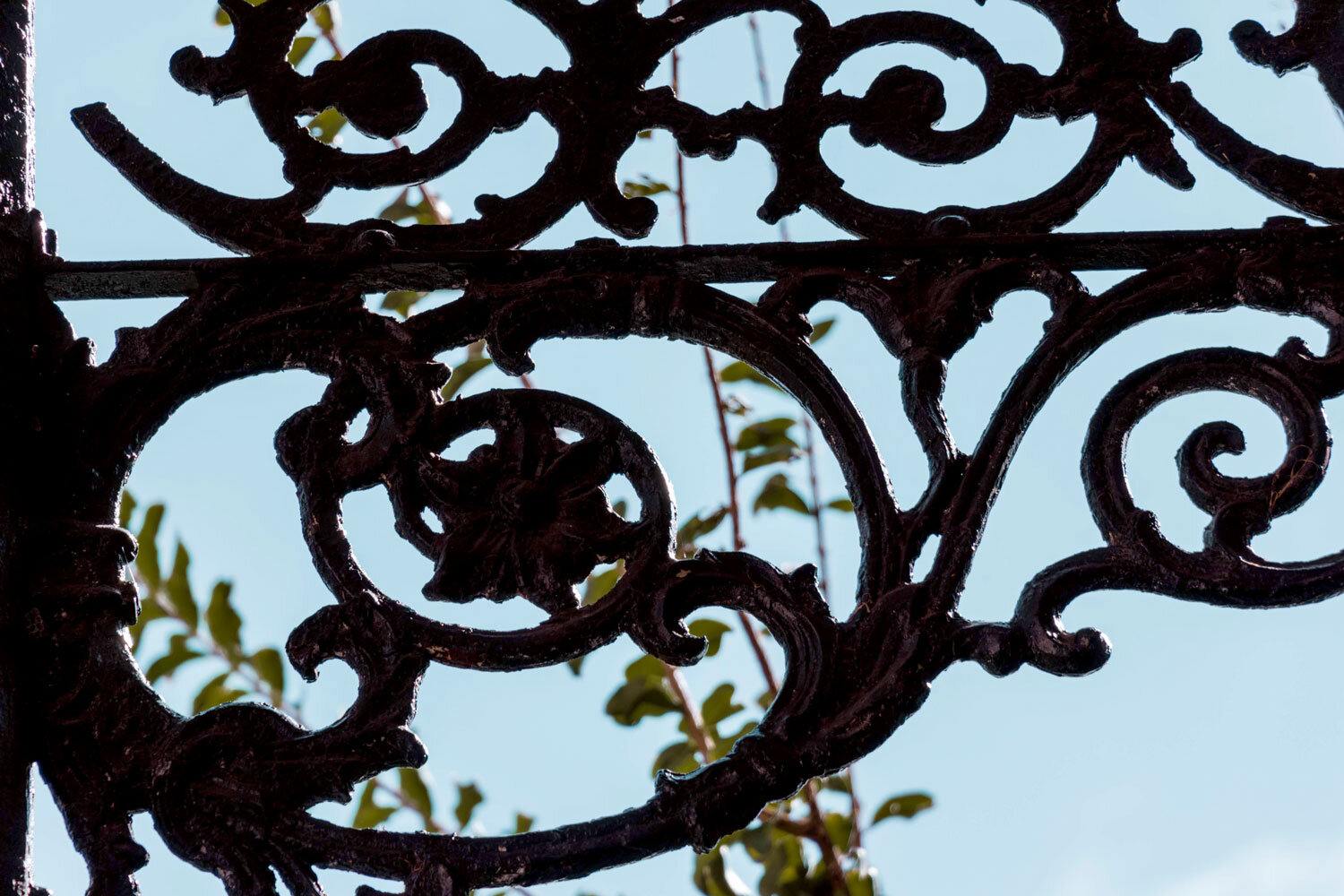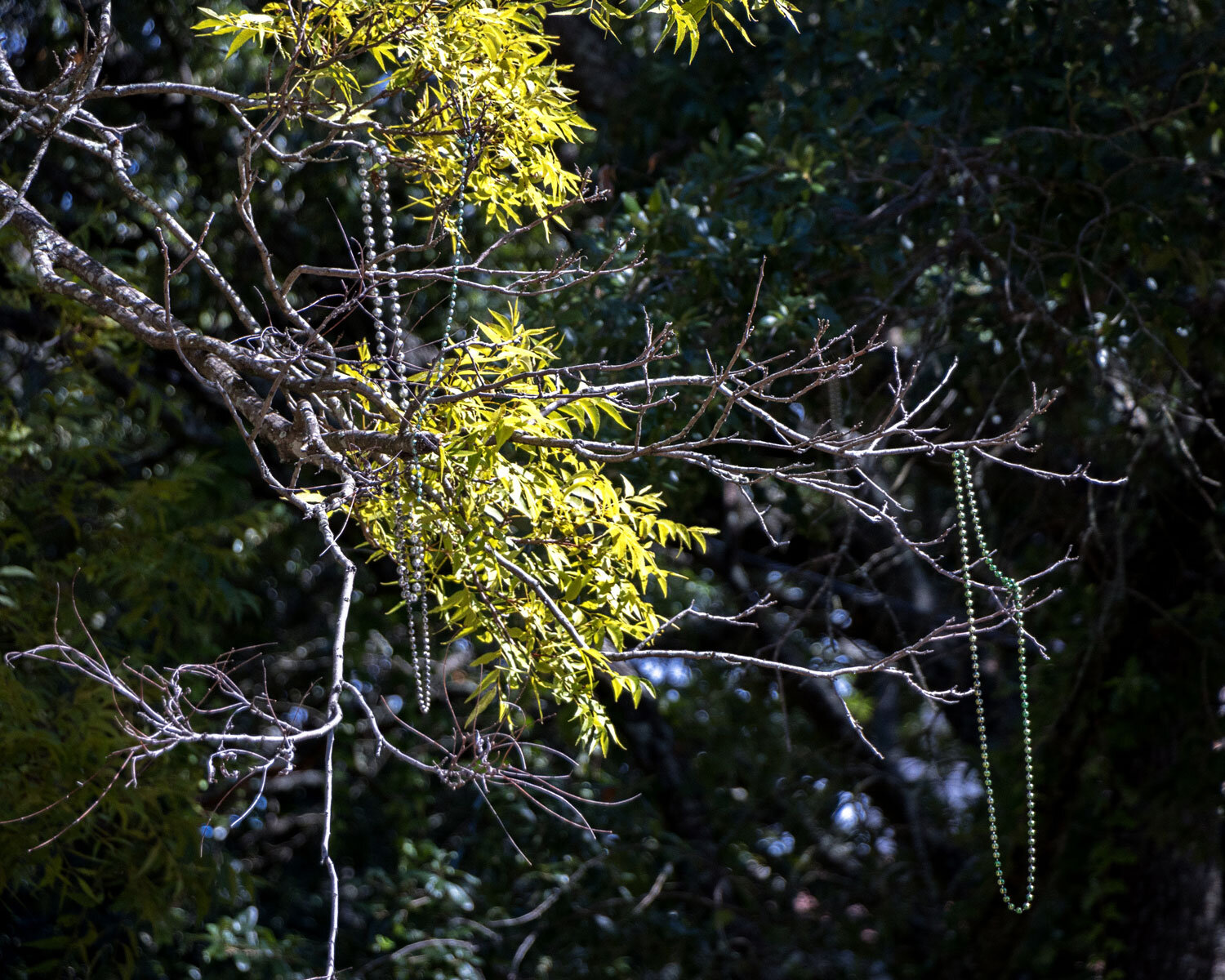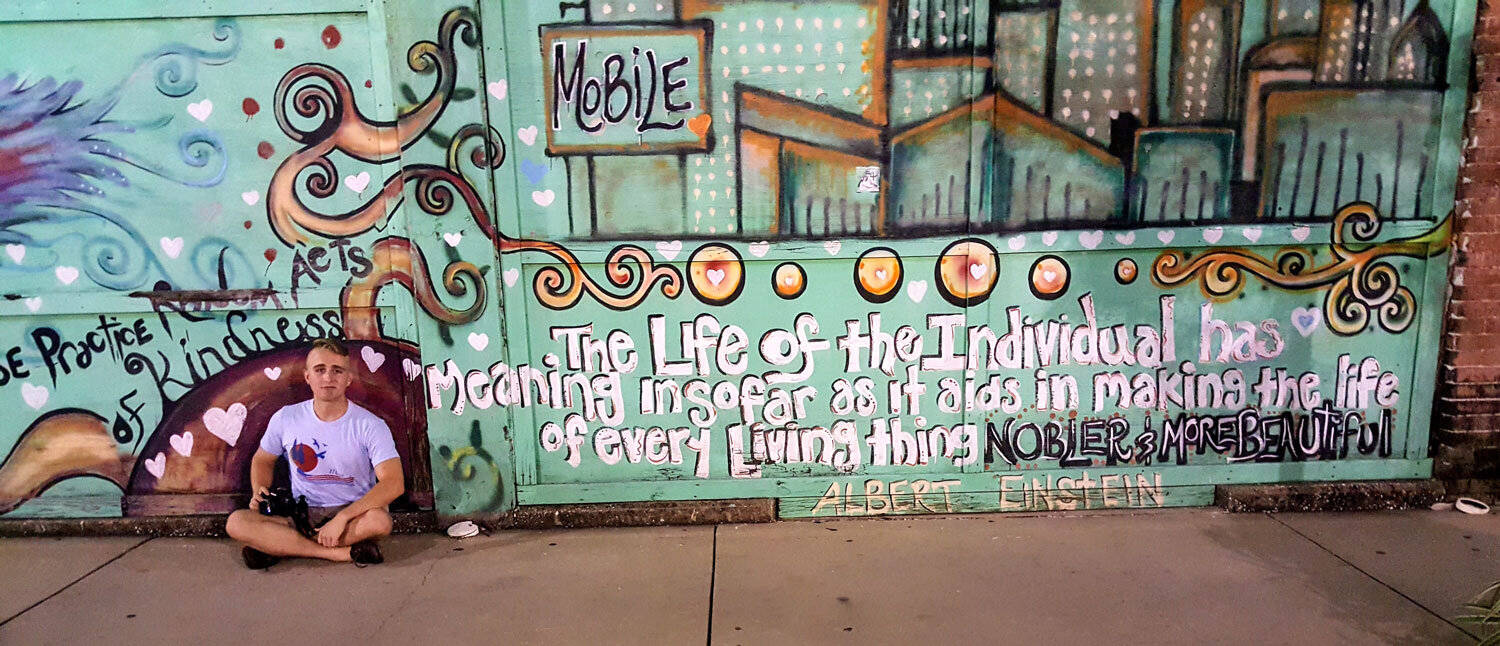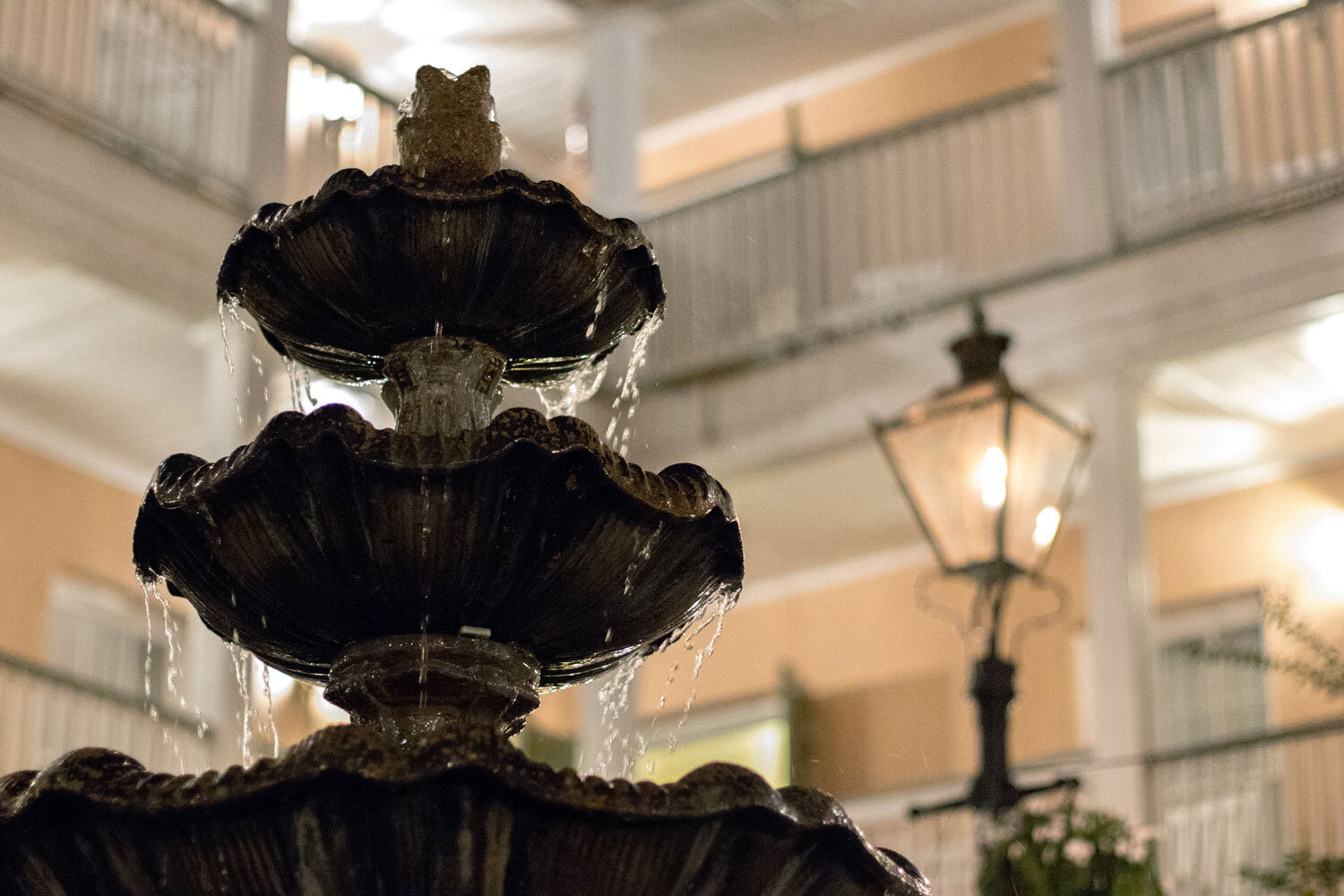This is a process & how-to post on making an idea better. I was unsatisfied with the original ‘Did I Leave The Stove On’ below.
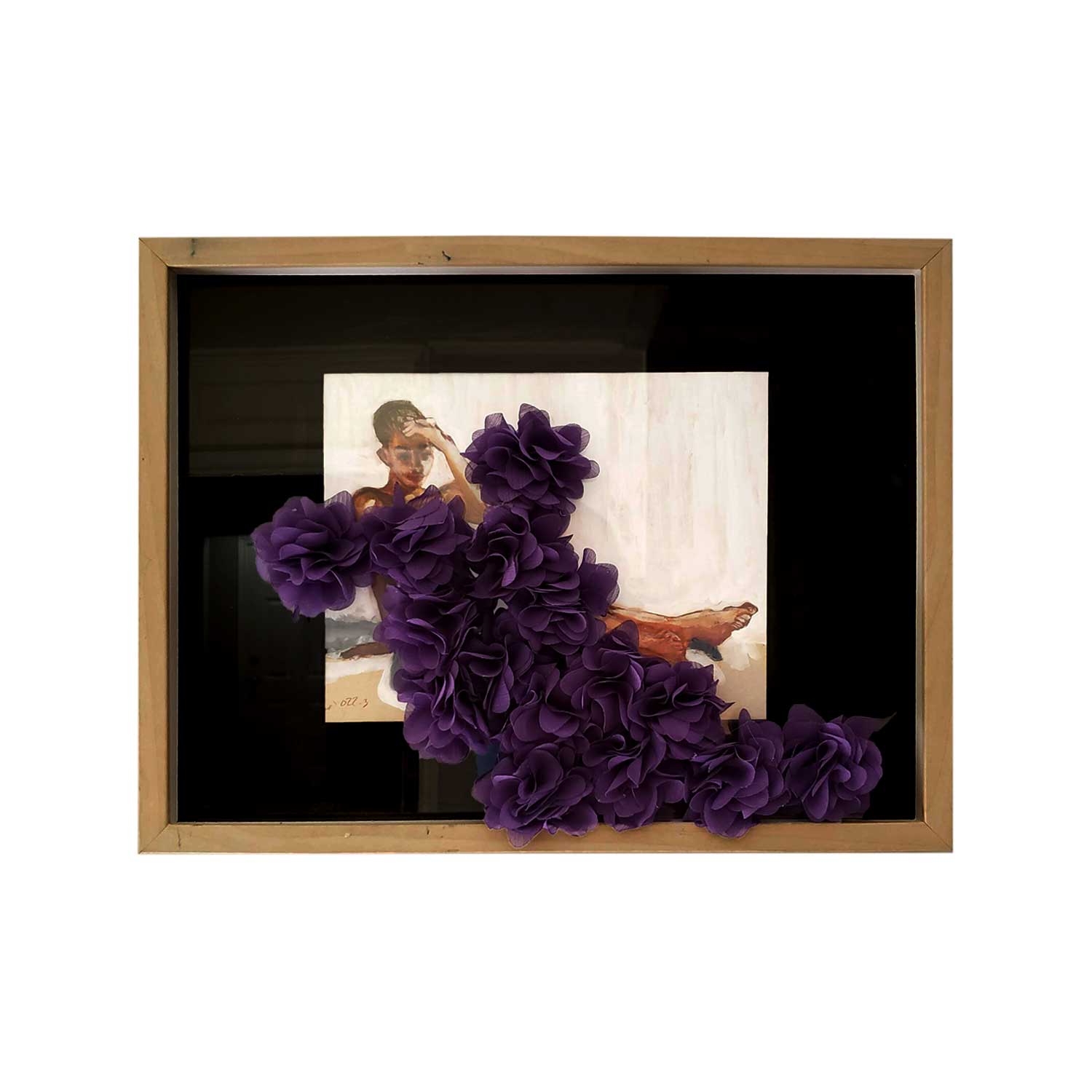
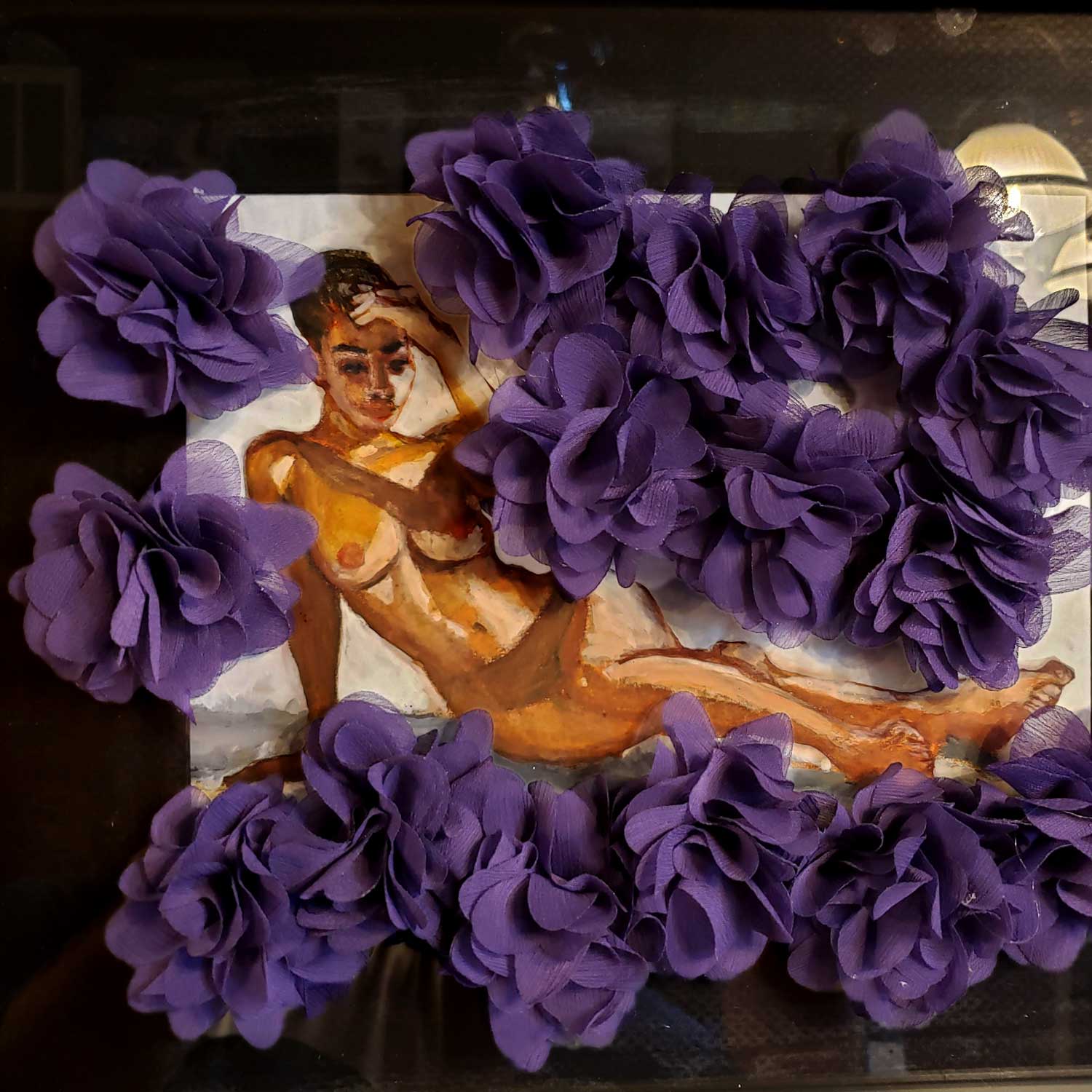
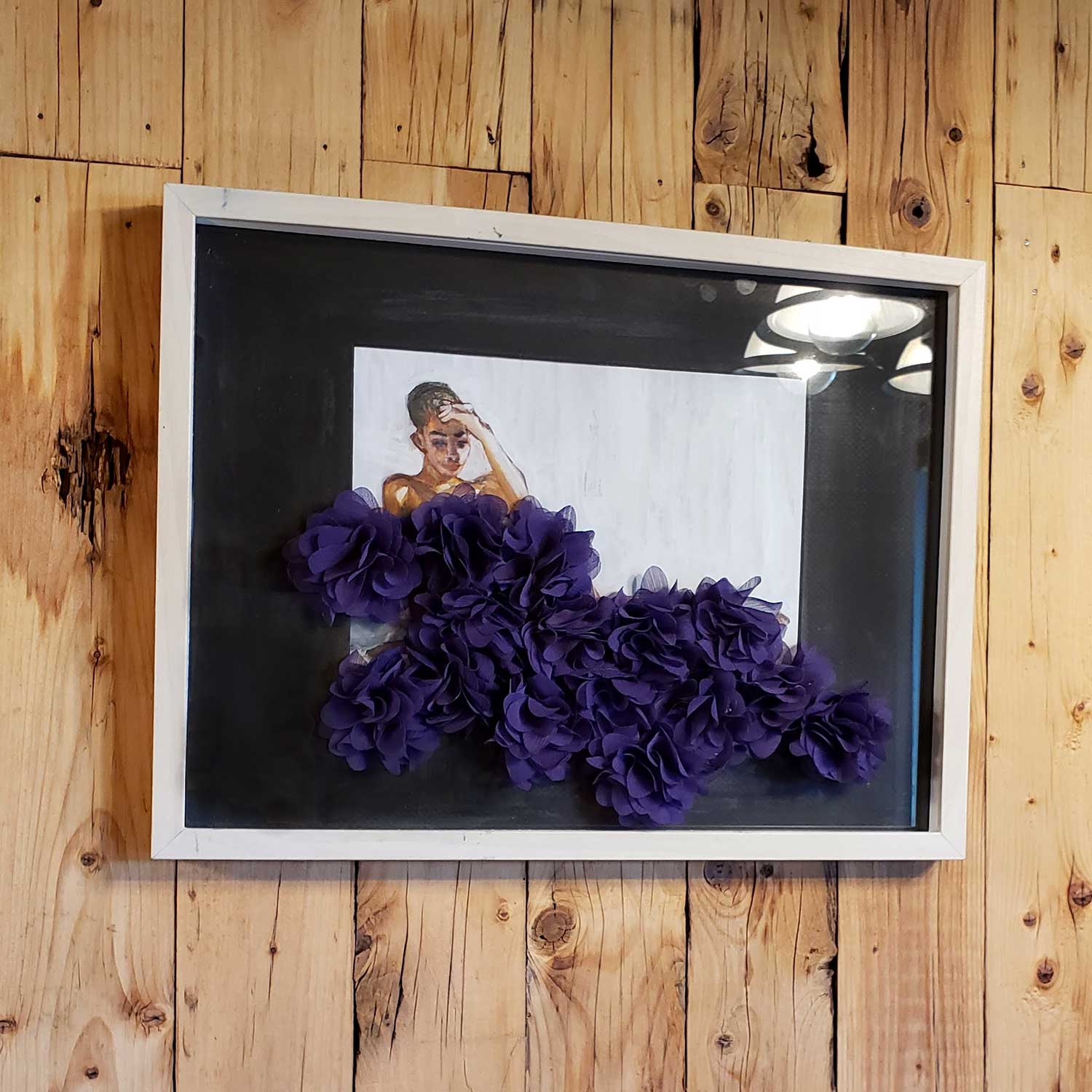
What worked: Model Sarahann’s serious pose inspired the title. She looks worried. I did like the color & texture of the fabric flowers. They are secured to circular magnets with commercial glue. A thin steel plate is set under the glass & behind artwork allowing the viewer to adorn or expose the nude with the magnets.
What didn’t work: The frame lacked harmony with the artwork. Nothing pushed the title’s joke to the viewer. Skin-tone colors were flat browns and yellows. I painted this 2 years ago without any training. I’ve since spent lots of time doing watercolor studies using Charles Reid’s books.
I love watercolor washes, but for this project they lacked the urgency of a stove on fire. Working light to dark wasn’t doing it. I took a LinkedIn Learning ‘Color Blocking’ course by Mary Jane Begin. I’d only seen under-painting technique in oil painting books , but MJB used it with watercolors. I’ve made her course available at https://www.facebook.com/studioJCG/
MJB also challenged me to rethink composition. Funny, I work with this daily as a visual designer. This art thing was suppose to focus only on lifedrawing, but a model in a sparse studio becomes a lone element on an empty page. It’s boring. No story. So when creating art you have to ask what do I want to look at?
I want composed scene that tells a story.
Composition asks:
How does foreground and background elements work with or against each other?
How is the scene blocked?
How do the colors reflect off each element and add to the piece?
What do you get rid of?
MJB’s class made it very clear that naked people covered in magnets isn’t the end of my technique, but where it should begin.
Where to get a background? Mo-beel, not mobile.
When my son Vincent graduated from Coast Guard BT school in Virginia, I flew out & we drove back to Texas. We stayed overnight in Mobile, AL at the Malaga Inn. This historic hotel is filled with ornate rooms. Very comfortable, affordable & southern gothic. Mobile is re-inventing itself with craft beer & great restaurants.
New rule for my art: Use images from places I’ve been.
Give yourself reference material you have experienced, then the process of painting forces you to remember the time spent there. You’ve got this one life. Examine and enjoy it.
On to tonal studies:
First attempt grey-scale on dark paper to block the shapes and shadows of the model.
Color study 01: this is with a blue under-painting. Not popping.
Color study 02: Gouache green under-painting. Something cool is happening, but again no composition, no background.
Color study 03: Windsor Newton Cadmium Orange watercolor wash on sketchbook. Let it dry. Watercolor painting with room & model. It has a warm glow from the wash, but too pale, so keep pushing…
Color study 04: Last test, watercolor paper, cadmium orange wash, then orange, yellow & black to block. Decide black is too dark for shadows. Blue will work.
Color study 04: Heavier washes of cadmium orange on 150 lbs watercolor paper. After drying, I use orange watercolor pencil blocks the scene.
Leap of faith: green under-painting of the skin. Ultramarine blue for shadows.
Something shifted into mauve & pink. It was a hot Texas day in August & paints dried strange. Walk away…
This is my limited palette of Windsor Newton gouache paints. No blacks are used in final painting…
When the image isn’t working, I work on the frame.
This is a re-purposed plastic frame. I like it because it’s light weight, but very sturdy. Testing it with gold metallic spray paint.
Gold is too distracting and doesn’t block the model in. I cover it with a glossy black spray-paint. I want the joke to come forth with a clicking oven knob & carve out the bottom center with a Dremel tool. I find both the Rust-Oleum Universal black gloss spray paint and oven replacement knob at Home Depot.
To lift the dial off an uneven surface, I cut a plastic collar from Playdoh cup and spray paint it.
Wood dowel glued into a oven dial. Washers lift it off the frame for smooth turning.
I took a round piece of steel & used snips to cut several upside down ‘L‘ in to. Needle nose pliers were used to twist down the edges that will strike a metal strip in frame to make a clicking sound. Nail used as a pin. Gorilla glue foam holds it all together.
Need to cap the wood end of the dial so it doesn’t grind a hole in someone’s wall. It also provides tension on the dial & hits the clicker. Plus it makes space for eyehooks & wire on back. Wire has to be used instead of teeth to make it strong enough for viewer to pull magnets. These wood additions will also keep the frame flush to the wall reducing bounce. I use a handsaw to cut 45 degree angles. Power tools would shred it. Slower, but steady as she goes….
Use a washer and nail to hold dial in place. Check that cuts line up. NOTE: paint the wood before you cut it to match the frame. If you get the broad surface areas covered, it minimizes clean-up. Also shown is a packaging insulation, Kodiakotton I saved from a delivery, used to pillow the front face of the frame and dial. Don’t damage your work.
I put a dap of wet paint on the dials’ dowel end and tap it to the bottom molding. The wet paint shows me the center point & I use a router tip on my dremel tool to carve out the capped backing. Really, lock down the wood and use 2 hands because as you can see here, the router likes to jump.
Decrease the weight of the frame by limiting metal hardware used. Instead, I use wood dowels and glue. Really pay attention here because you don’t want to split the wood. Pre-drill the hole with a tiny bit. Use another bit that is just a little smaller than the dowel. Fill hole and seam with wood glue. Clamp it. Gently tap dowel into hole.
Close up of tapping the dowel into the hole. I use a smaller 5oz hammer for this to prevent the dowel from splintering. Let it dry and then use a Dremel wood cutting disk to shave off the end. Remember, this is not quick work. Don’t rush it or you will break it, but if you succeed, the joint will be strong. Ask a Quaker or Shaker furniture maker.
Because the front frame is plastic, the backing is wood & I’m running out of time before hanging the #EastAustinStudioShow I elect to Gorrilla glue the back to front and secure with metal screws. Again, pre-dill to prevent splitting. Note that the router wood fits snug to the washers. Paint all the unpainted parts and touch up any scratches…
Hell yeah I Bedazzled & glittered it! What else beside setting the thing on fire would show the threat of leaving a stove on? Fire is chaos, so glue-gunned asymmetrically, but focused on color harmony. Now, it is obvious that the color temperature of the painting has to match the colors in the frame.
Foot study, because the toes in the painting suck and need to get better with practice.
I mix and finish the painting. On a risk, I applied a cadmium orange wash to the whole painting and it didn’t reactive the gouache paint. Magnetic strips are glued to all sides of piece to hold the purple fabric flowers until someone plucks them.
Adorn her.
Or expose her, but I’m calling this piece complete and very happy with it. Buy Did I leave the stove on? in the store.
Here’s the painting used in the invite for Art 84 Gallery during the #EastAustinStudioTour.

